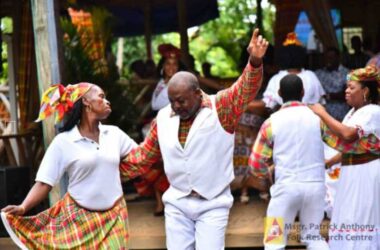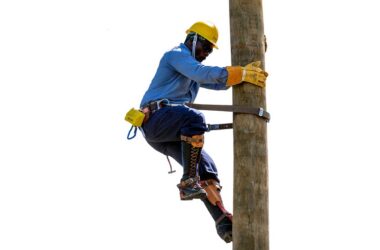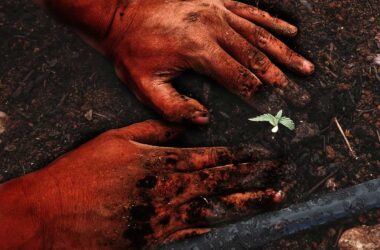IT used to be that Carnival was an annual exhibition of the combined creative talents of Costume Designers, Steel-bandsmen and Calypsonians. It still is, but the changes over the years have seen distinct metamorphoses of various kinds.
The debate (thankfully) will continue ad infinitum over everything from the ever-present vulgarity that passes for ‘Playing Mas’ to the uniform wholesale import of revelers’ costumes, from the sheer size of some bands to the growing inadequacy of venues for shows, from the time bands have to leave the streets to the veritable absence of steel bands providing carnival parade music.
(In this still mainly Catholic country) The extraction of Ash Wednesday from Carnival will continue to be an annual sore point for those who grew-up ‘Burying Vaval’ at The Queen’s Lane, to cross their foreheads with warm ashes before heading to the then Cathedral of the Immaculate Conception to start the Lenten Season of abstinence.
But in the midst of it all, there’s always those without whom much of what we see would have been invisible – including the designers of King and Queen of the Bands costumes, Lyricists and Steel Band Music Arrangers.
Some things just won’t change. Competitors on the national calypso stage will continue to belt out lyrics reflecting the national mood – and politicians of all stripes simply need to understand and accept this. But the young singers in the school competitions have a totally different take, their themes reflecting more than would normally be expected from apparently docile infant-and-primary students.
What’s been sorely lacking over the years, however, is enough methodical continuity in Carnival planning. Regime Change results more in interruption and returns-to-the start than evolutionary approaches towards achievable goals.
Succeeding generations continue to grow without any understanding or appreciation of from whence Carnival cometh. Many adults (and too many in the eyes of many) still see Carnival as an annual license to publicly display their most acute variations of bodily elasticity. Today’s youth, in the main, groove to the Carnival beat in different ways than the sages of yore. Children participate in Kiddies Carnival, but most still have little idea what all the fun is about.
(Perhaps) National institutions and associations need to start looking beyond Carnival Tuesday evening and begin treating Carnival itself less as a seasonal affair and more as an annual national cultural product being planned for all-year-long.
(Maybe) The Cultural Development Foundation (CDF), the National Archives and the National Trust can team-up with the Monsignor Patrick Anthony Folk Research Center (FRC) and other like entities to mount a permanent exhibition (akin to that so commendably done for the 70th Anniversary of the 1948 Castries Fire) of ‘Saint Lucia Carnival Over The Years’, accompanied by appropriate historical footnotes and moving from school to school, all year round.
And with the FRC never so much in need of a new home, how about dedicating an activity or two — before the end of Carnival 2018 — to start raising funds for its construction (or reconstruction)?
Just a few thoughts to chew on — but to also make the point that no matter what, Saint Lucian revelers have mainly come to take Carnival in whichever and whatever way it comes, because, as far as the thousands who look forward to it every year are concerned, you can jump high or low and Play Mas wherever or however, but just don’t (ever) even think of stopping the carnival. Never!


![Image: Three years ago, Gros Islet Carnival generated some positive buzz. [PHOTO: Stan Bishop]](https://thevoiceslu.com/wp-content/uploads/2016/07/Three-years-ago-Gros-Islet-Carnival-generated-some-positive-buzz.jpg)










